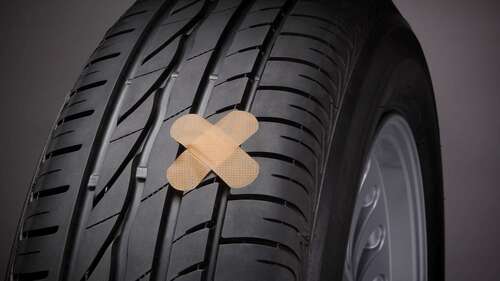
The Department of Transportation has set guidelines following the recommendations of industry experts for what sizes of holes can and should be fixed. The U.S. Tire Manufacturers Association recommends that the puncture should never be more than a quarter of an inch in diameter (the quarter-inch rule). Tire injuries that can be fixed only affect the tread and stay between the outside shoulder grooves.
While plugging the hole or patching alone could help keep the tire going a while longer, these are not necessarily long term solutions. The best and recommended way to fix a tire is using the combination of a plug to fill the hole and a patch to seal it. But before doing that, the tire must be dismounted from the vehicle and inspected for further damage — no tire repairs should be done while the tire is still attached to the car.
Also, tire repairs cannot overlap, no matter what. If your tires have sustained damage in areas that meet, that tire must be disposed of. It doesn’t matter if the injuries both meet the quarter-inch rule requirements; the tires are now deemed irreversibly unsafe.
Ignoring this procedure can be a primary cause of tire failure, a dangerous situation that may threaten your life. Also, when you’re using a patched tire, try to inspect the tire pressure as often as you can to ensure the repair is holding up.

